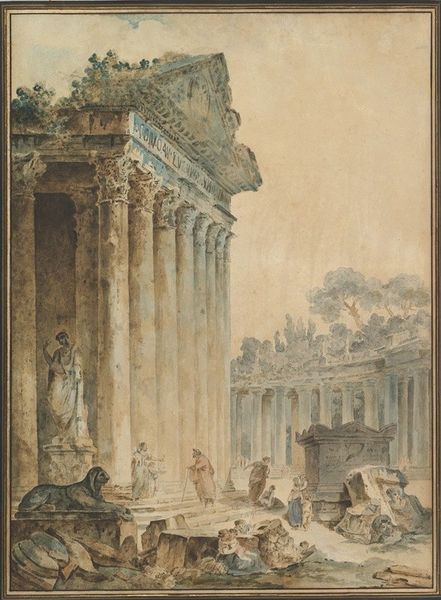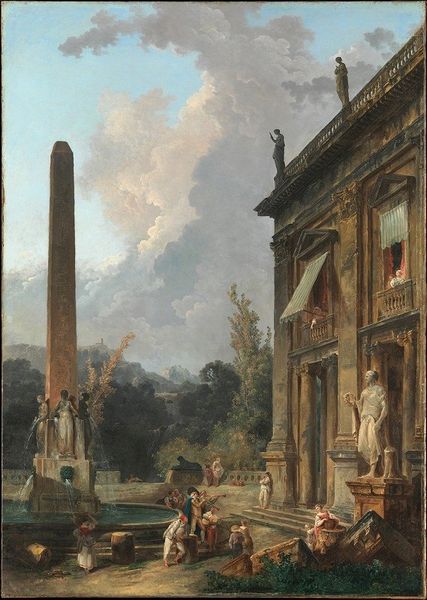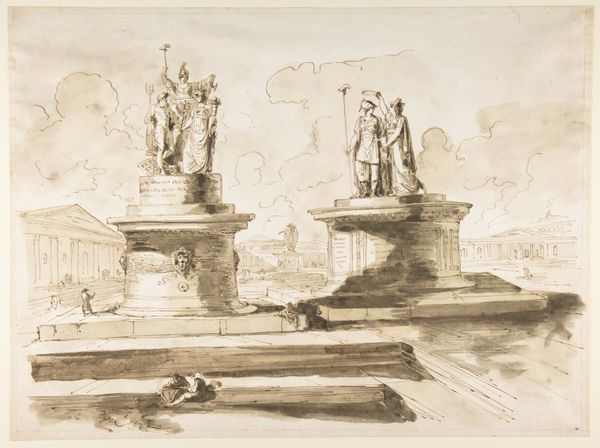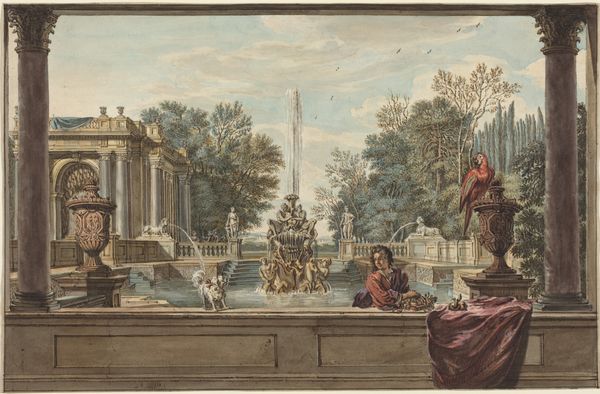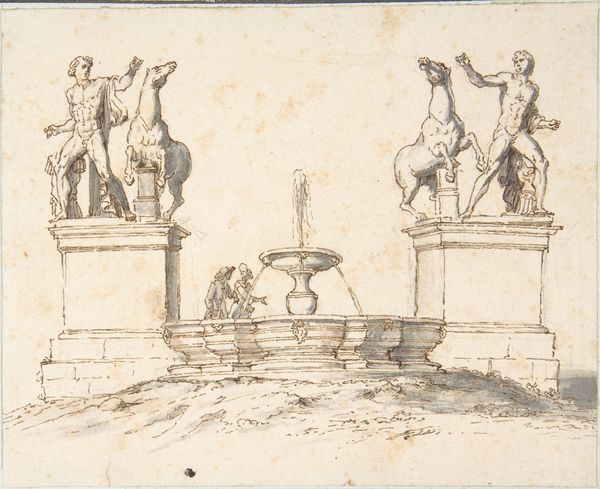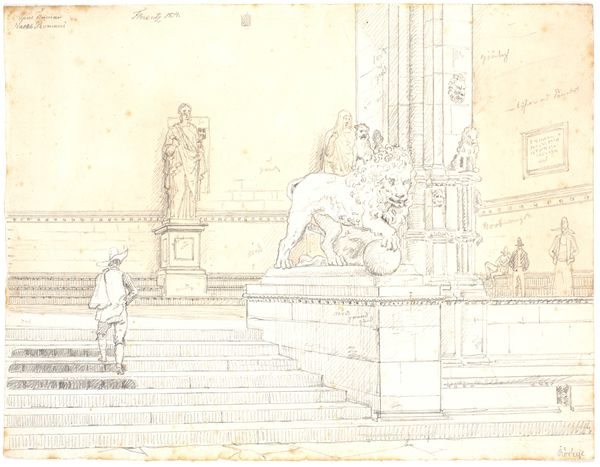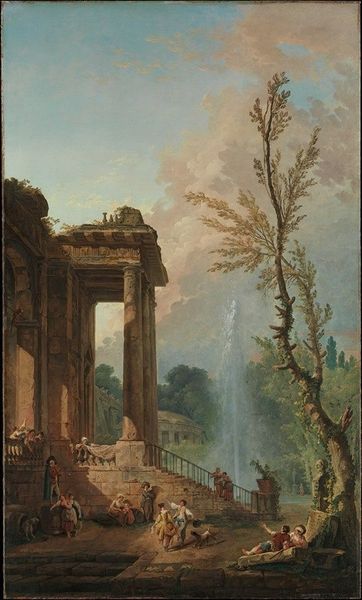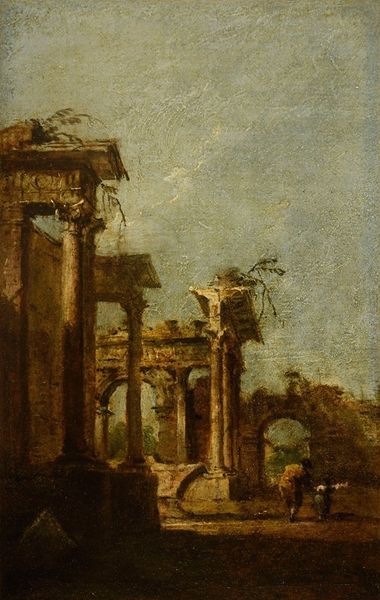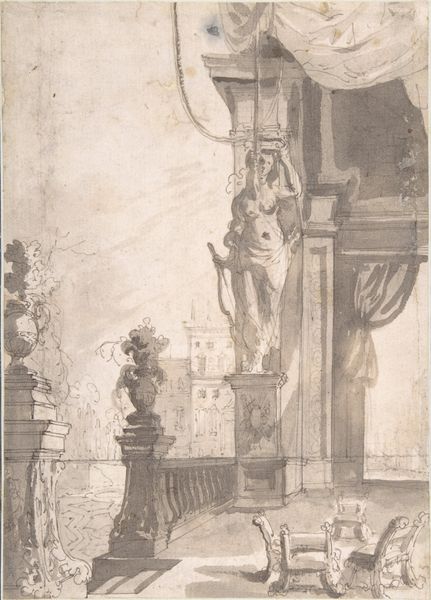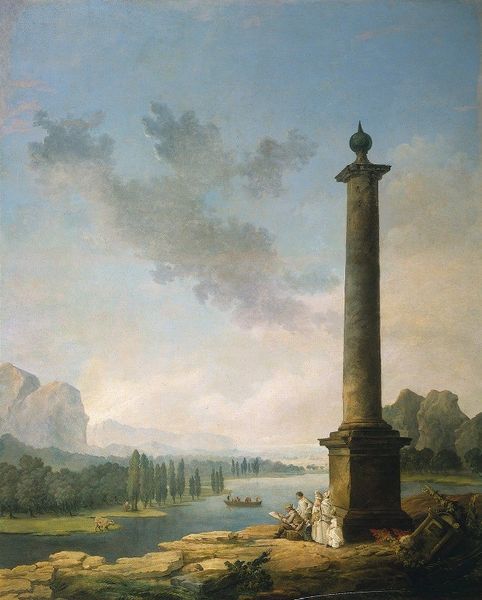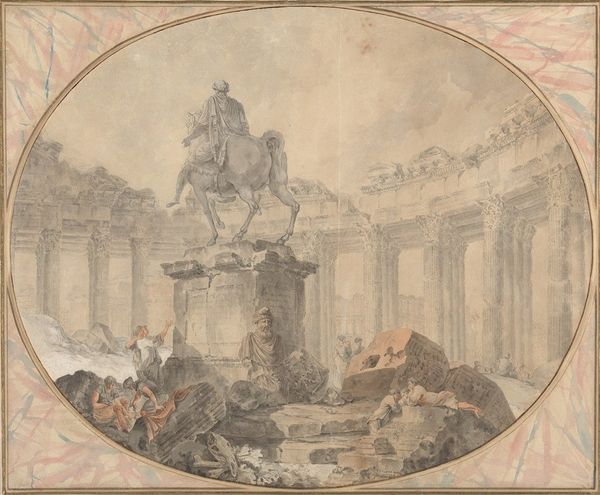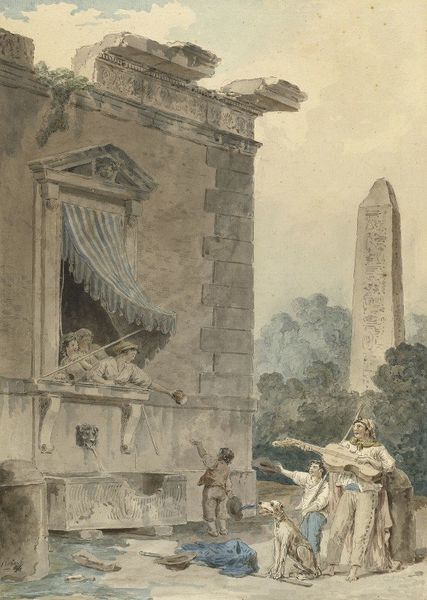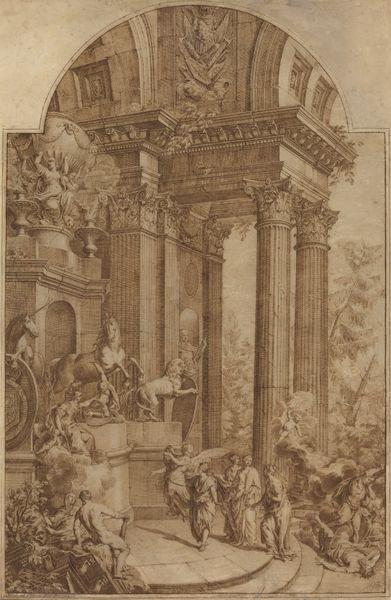
watercolor
#
landscape
#
perspective
#
watercolor
#
romanticism
#
cityscape
#
watercolor
Copyright: Public Domain: Artvee
Curator: "The Fountain on the Prado, Madrid," painted around 1837 by David Roberts. It's a delicate watercolor that captures a bustling scene, yet the colour palette creates this very subtle melancholic atmosphere. What catches your eye about it? Editor: The fact that it is a watercolour brings a sense of fragility. I’m interested in how a 'fragile' material such as watercolour is deployed to depict such permanent fixtures of civic life such as architecture. What does the use of watercolour tell us here, beyond its aesthetic qualities? Curator: Precisely. Watercolor, often associated with fleeting impressions and amateur pursuits, is used to document a solid, established cityscape. What does this contrast tell us about Roberts’s relationship with the scene itself, its representation and what its representation may represent, culturally? Editor: I suppose there's an inherent commentary on the transient nature of life against the backdrop of seemingly permanent structures? Like the people in the foreground, just pausing for a while? Curator: Interesting thought! But think more deeply about the production itself. The pigments he used, for example. Where did they come from? Who made them, and under what conditions? Consider also the paper itself. These are the unspoken materials that helped to bring the "Fountain on the Prado" into being. Editor: So, we're looking at the broader economic and social systems that allowed this image to even exist. Were there exploitative practices involved in producing the materials, and does the seemingly innocent depiction of leisure potentially mask that? Curator: Exactly. The material tells the true story if you really analyse where it comes from, how it has been used, and the conditions for its production. Editor: I never would have thought of it that way! It’s fascinating how digging into the material realities reveals these layers of meaning. Curator: Indeed. Art history isn’t just about dates and styles, it’s about understanding the physical and social processes intertwined in a work of art’s creation.
Comments
No comments
Be the first to comment and join the conversation on the ultimate creative platform.
